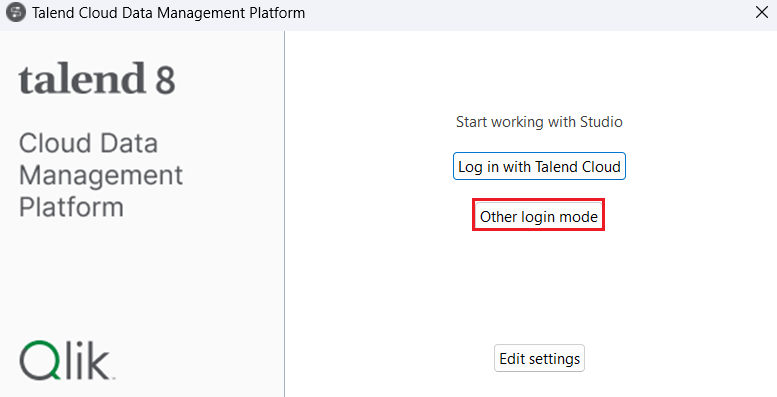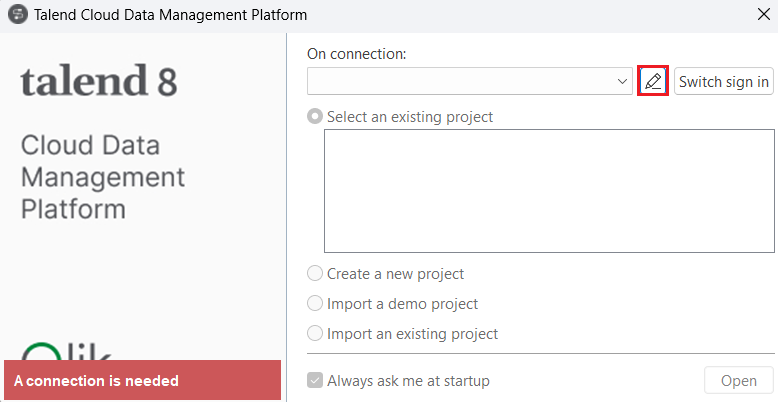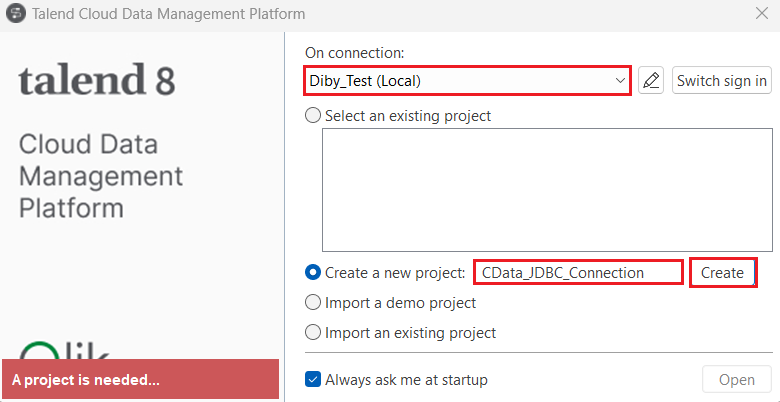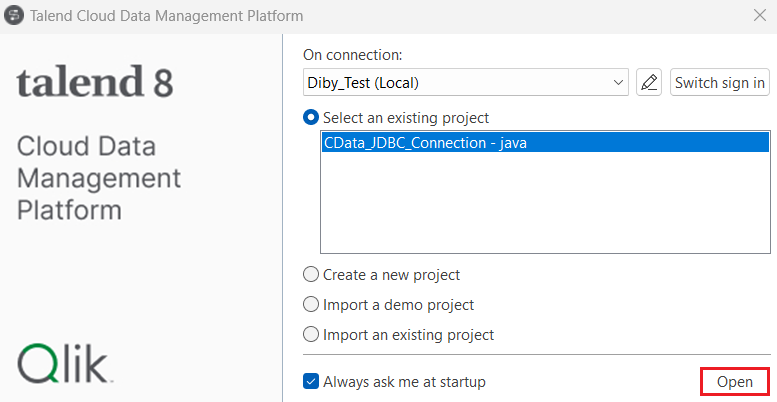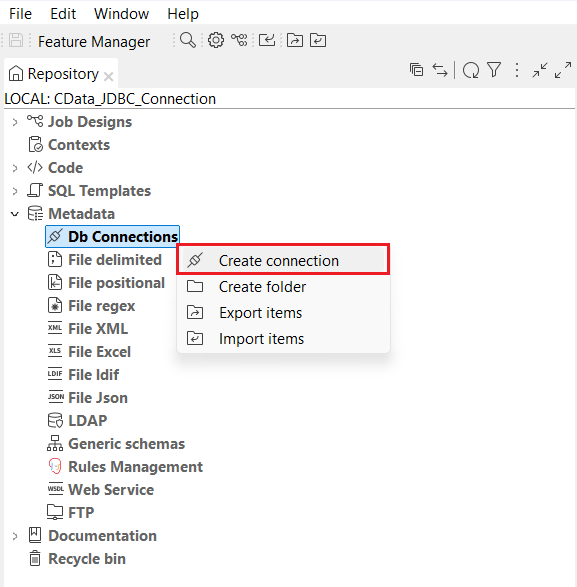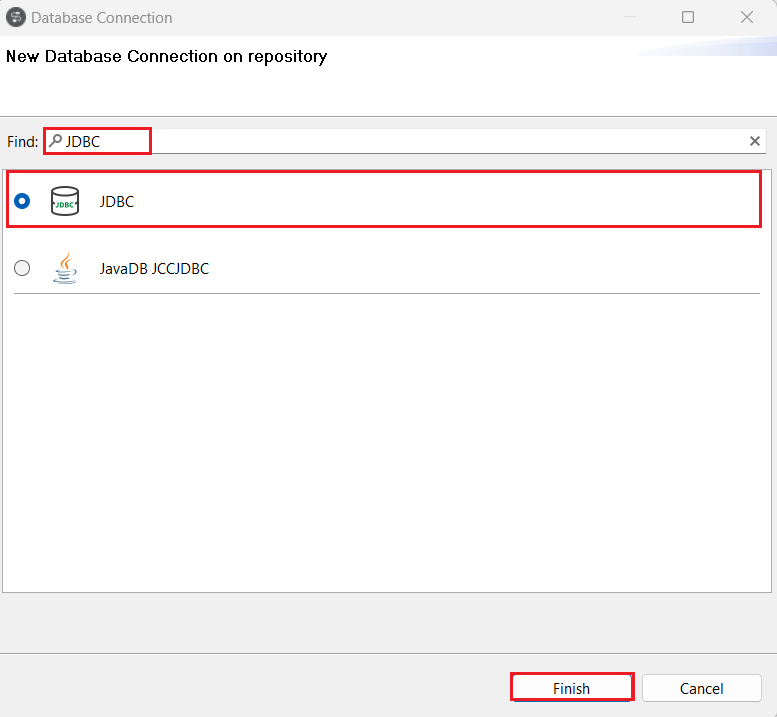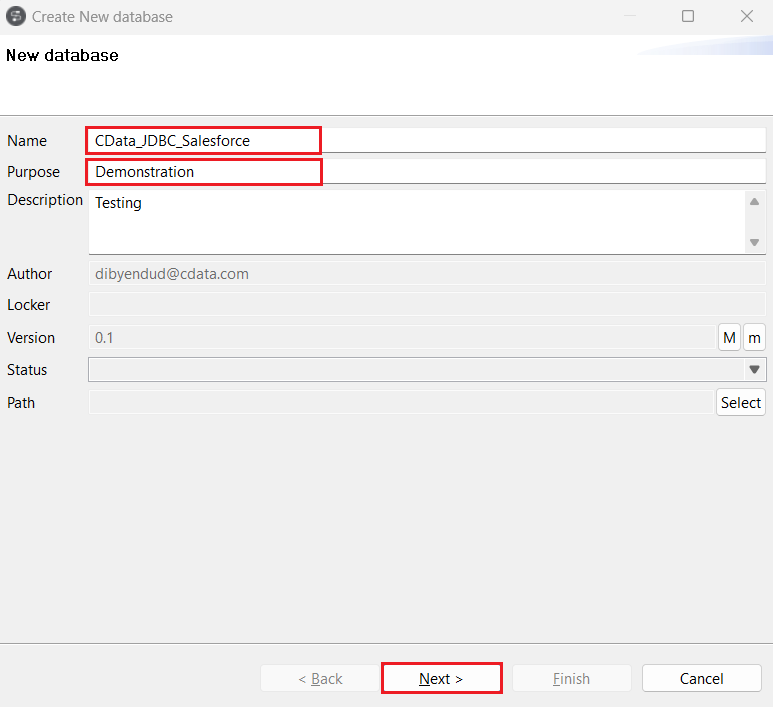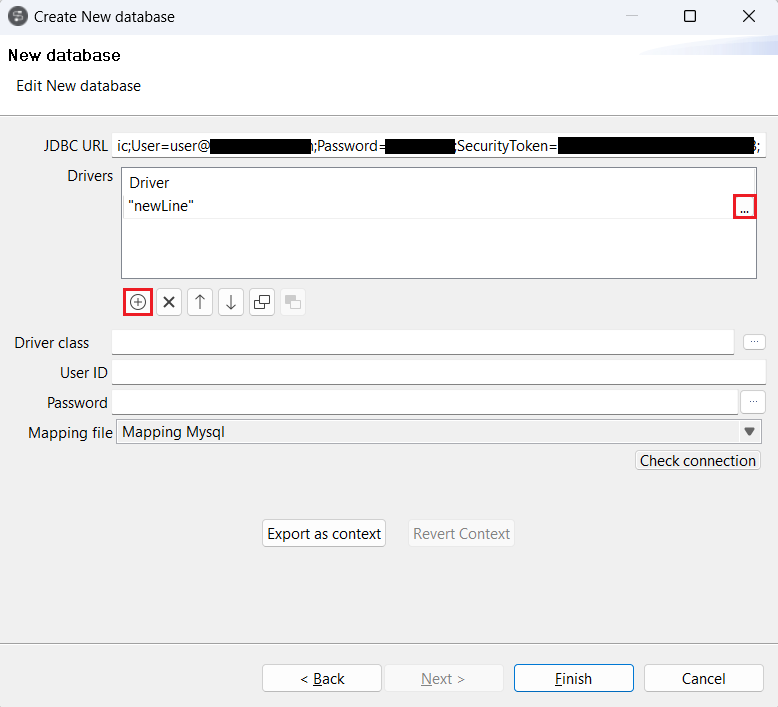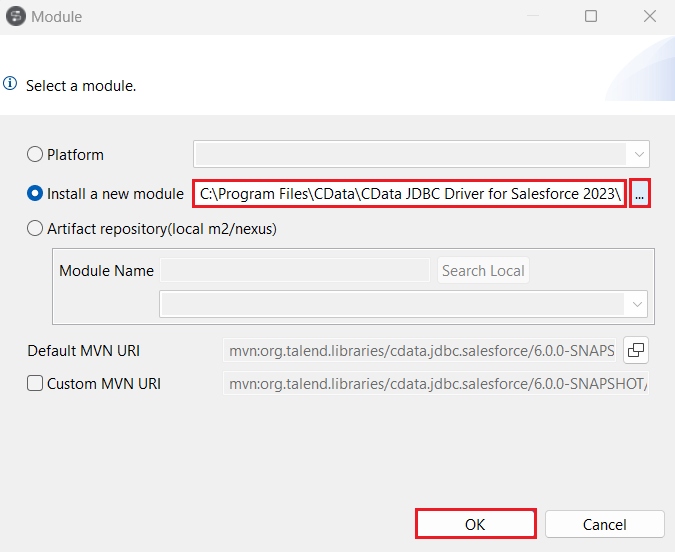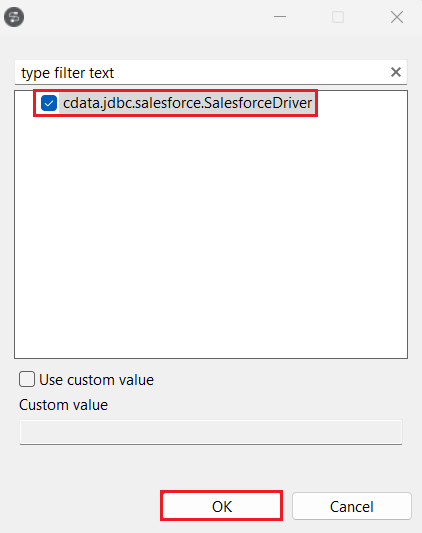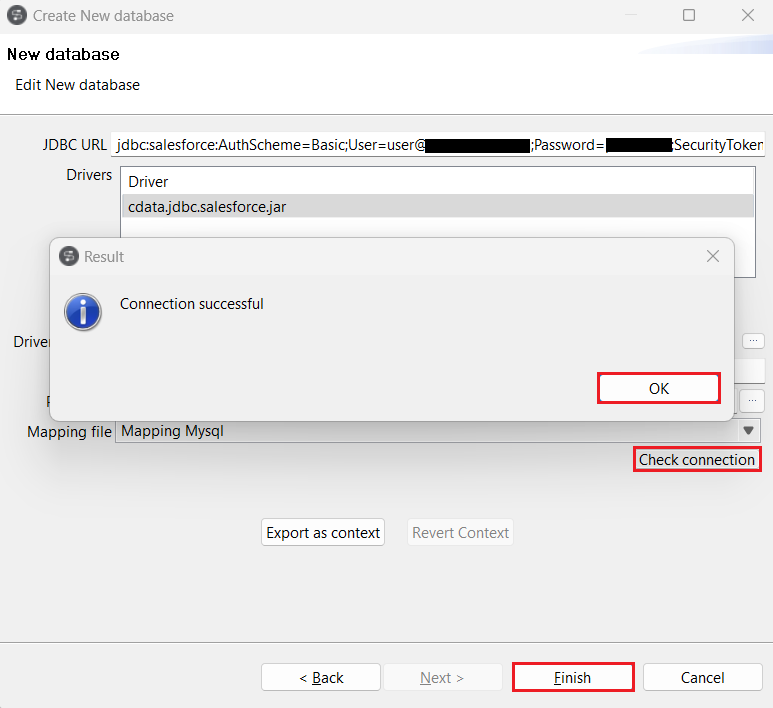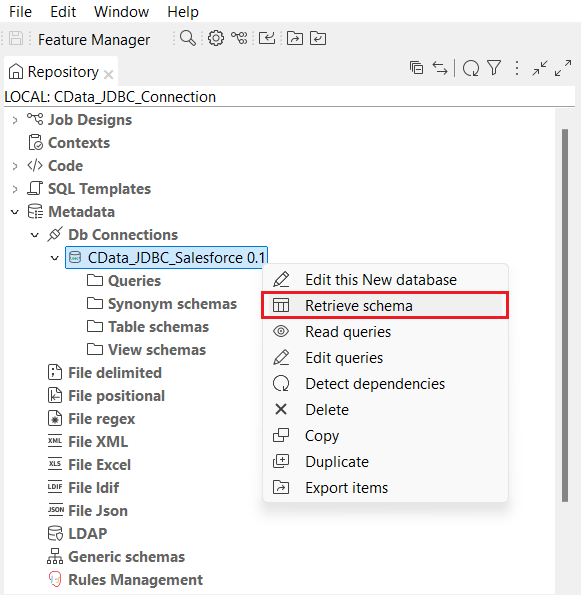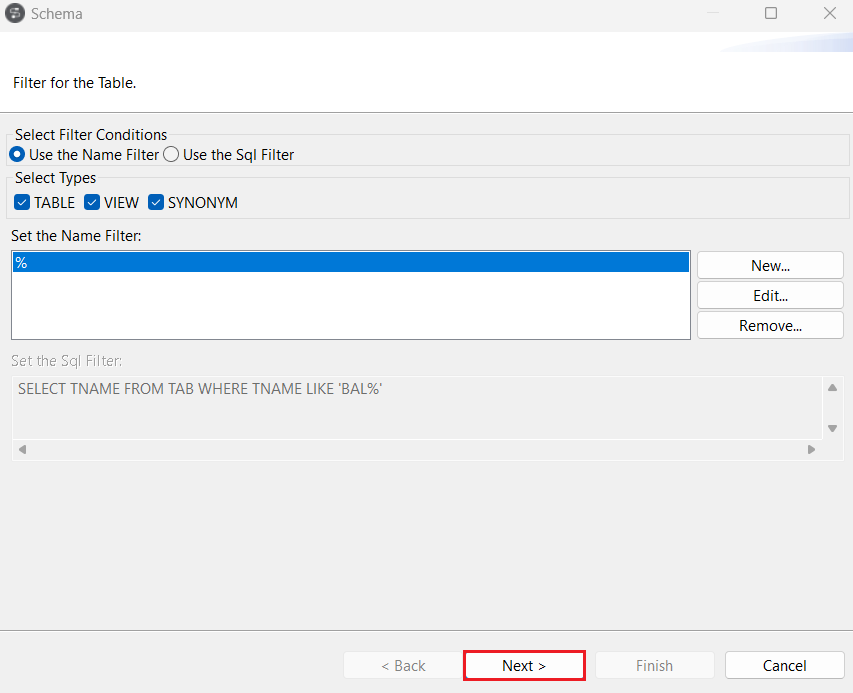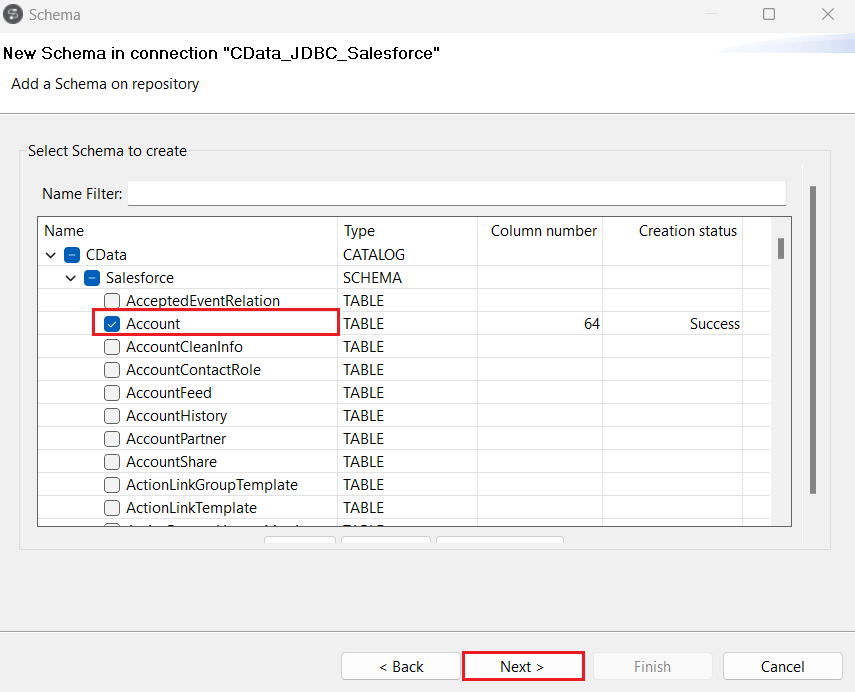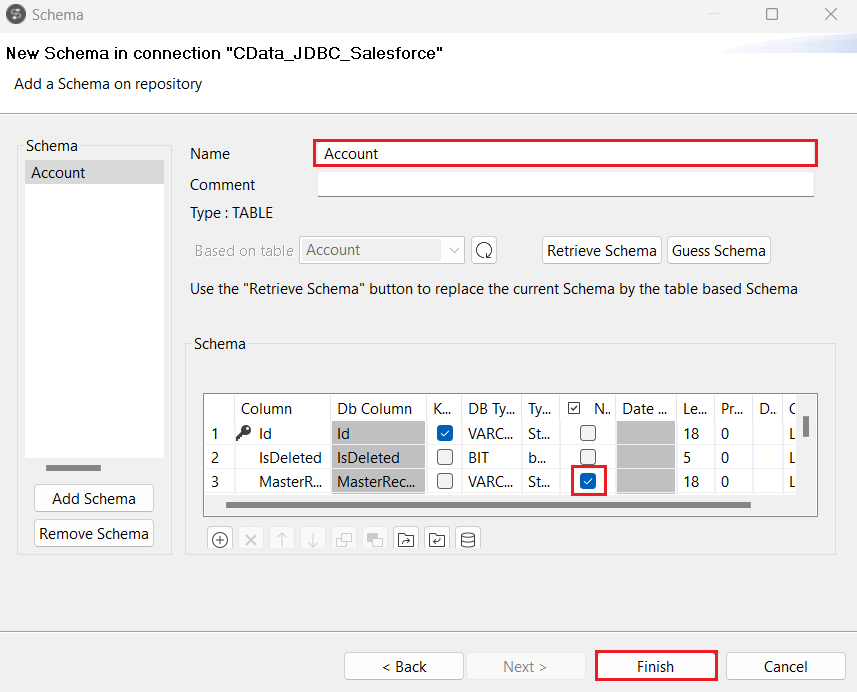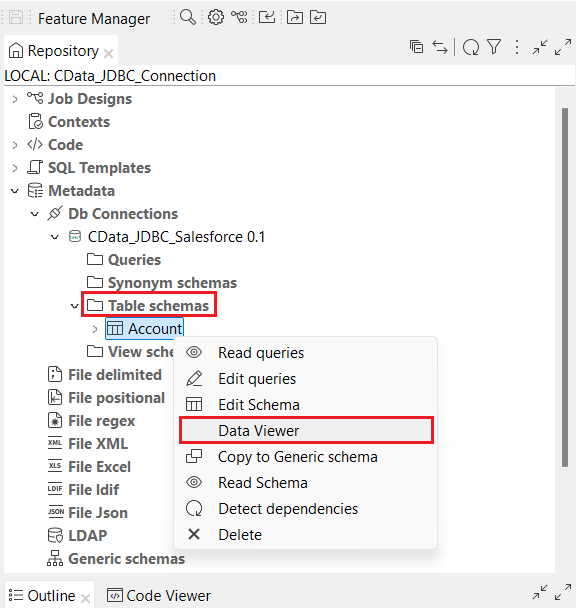Model Context Protocol (MCP) finally gives AI models a way to access the business data needed to make them really useful at work. CData MCP Servers have the depth and performance to make sure AI has access to all of the answers.
Try them now for free →Integrating Databricks Data in Talend Cloud Data Management Platform
Connect Databricks Data with Talend Cloud Data Management Platform using the CData JDBC Driver for Databricks.
Qlik's Talend Cloud Data Management Platform supports various data environments, enabling analytics for smarter decisions, operational data sharing, data and application modernization, and establishing data excellence for risk reduction. When paired with the CData JDBC Driver for Databricks, you can improve data integration, quality, and governance for your Databricks Data. This article shows how you can easily integrate to Databricks using a CData JDBC Driver in Talend Cloud Data Management, and then view the data for simultaneous use in your workflow.
About Databricks Data Integration
Accessing and integrating live data from Databricks has never been easier with CData. Customers rely on CData connectivity to:
- Access all versions of Databricks from Runtime Versions 9.1 - 13.X to both the Pro and Classic Databricks SQL versions.
- Leave Databricks in their preferred environment thanks to compatibility with any hosting solution.
- Secure authenticate in a variety of ways, including personal access token, Azure Service Principal, and Azure AD.
- Upload data to Databricks using Databricks File System, Azure Blog Storage, and AWS S3 Storage.
While many customers are using CData's solutions to migrate data from different systems into their Databricks data lakehouse, several customers use our live connectivity solutions to federate connectivity between their databases and Databricks. These customers are using SQL Server Linked Servers or Polybase to get live access to Databricks from within their existing RDBMs.
Read more about common Databricks use-cases and how CData's solutions help solve data problems in our blog: What is Databricks Used For? 6 Use Cases.
Getting Started
Prerequisites
Before connecting the CData JDBC Driver to view and work with your data in Talend Cloud Data Management Platform, make sure to download and install the latest version of Talend Studio on your system. Also, ensure that you have the required prerequisites.
- A Talend Cloud Data Management account with appropriate permissions.
- The CData JDBC Driver for Databricks, which can be downloaded from the CData website.
Connect to Databricks in Talend as a JDBC data source
Access Talend Data Management Cloud
- Run the Talend Cloud Data Management Platform installed on your local system and click on Other Login Mode.
![Log into Talend Cloud Data Management Platform locally]()
- Click on Manage Connections. Set Repository to "Local" and enter the Name, Description and User E-mail in the respective spaces. Set the Workspace path and click on OK.
![Manage a connection.]()
![Create a connection in Talend Data Management Cloud]()
- Now, select the Create a new project radio button to add a new project name and click on Create.
![Create a new project.]()
- The new project should appear under the Select an existing project section. Click on Open. The Talend Cloud Data Management Platform workspace opens up.
![Open the Talend Cloud Data Management Platform workspace.]()
Create a new connection
- In the navigation pane, locate and expand the Metadata dropdown. Right-click on Db Connections and select Create Connection.
![Create a new connection in the Talend platform under Db connections.]()
- Search for and select 'JDBC' in the Find section of the Database Connection window. Then, click on Finish.
![Search and select the JDBC connector.]()
- Enter the Name, Purpose and Description of the new database in Talend where you need to load the Databricks data. Click on Next.
![Enter details of the database toload the source data.]()
- Generate a JDBC URL for connecting to Databricks, beginning with jdbc:databricks: followed by a series of semicolon-separated connection string properties.
To connect to a Databricks cluster, set the properties as described below.
Note: The needed values can be found in your Databricks instance by navigating to Clusters, and selecting the desired cluster, and selecting the JDBC/ODBC tab under Advanced Options.
- Server: Set to the Server Hostname of your Databricks cluster.
- HTTPPath: Set to the HTTP Path of your Databricks cluster.
- Token: Set to your personal access token (this value can be obtained by navigating to the User Settings page of your Databricks instance and selecting the Access Tokens tab).
Built-in Connection String Designer
For assistance in constructing the JDBC URL, use the connection string designer built into the Databricks JDBC Driver. Either double-click the JAR file or execute the jar file from the command-line.
java -jar cdata.jdbc.databricks.jarFill in the connection properties and copy the connection string to the clipboard.
![Using the built-in connection string designer to generate a JDBC URL (Salesforce is shown.)]()
A typical JDBC URL is below:
jdbc:databricks:Server=127.0.0.1;Port=443;TransportMode=HTTP;HTTPPath=MyHTTPPath;UseSSL=True;User=MyUser;Password=MyPassword; Enter the JDBC URL copied from CData JDBC Driver for Databricks in Edit new database.
![Enter the JDBC URL (Salesforce is shown).]()
- Click on the "(+) Add" button under Drivers. A 'newLine' will appear in the Drivers board. Click on (...) at the end of the new line, select the Install a new module radio button, and click on (...) to add the path to the JAR file, located in the 'lib' subfolder of the installation directory. Click on OK.
![Add a new line in Drivers board to add the path to the Databricks JAR file (Salesforce is shown).]()
![The lib folder which contains the Databricks JAR file (Salesforce is shown).]()
![Add the JAR installation path in 'Install a new module' (Salesforce is shown).]()
- Select the Driver Class as cdata.jdbc.databricks (JAR file obtained from your installation directory given in the previous step).
![Add the Driver class.]()
Test the new connection
- Click on Check Connection. If the entered details are correct, a "Connection successful" confirmation prompt will appear. Click on "OK" and "Finish".
![Check the connection.]()
- Once the connection is established, right-click on the newly created connection and select Retrieve Schema. You can use the filters as well to retrieve the data as per your requirements. Click on Next.
![Retrieve schema from the datasource.]()
![Add the necessary filters.]()
- Expand the "CData" catalog in the Schema window and select the tables you want to import from the Databricks schema. Click on Next.
![Select a table from the Databricks schema.]()
- In the next step, select the columns you want to view from the table and click on Finish.
![Select the necessary columns from the selected table.]()
- All the selected tables from the Databricks schema are now populated under the Table Schemas section of the JDBC connection.
- Right-click on any of the selected tables and click on Data Viewer to preview the data from the data source.
![Click on Data Viewer to view the source data.]()
![Display the source table view.]()
Get Started Today
Download a free, 30-day trial of the CData JDBC Driver for Databricks and integrate Databricks data into Talend Cloud Data Management Platform. Reach out to our Support Team if you have any questions.

